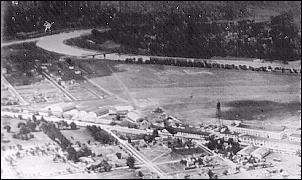

Wright Field As Air Corps' New Test Site
|
October 12, 1927, Research and Development at McCook Field When the U.S. entered WW I, an urgent need developed for an active research and development (R&D) program for military aviation. A site was selected at Dayton, Ohio because of its location relative to America's industrial complex and on October 18, 1917, McCook Field was established. For the next 10 years it was to serve as the nerve center of military aviation R&D in the U.S. During WW I McCook Field made impressive strides in airplane and engine development, but its greatest contributions came in the years after the war. Operating on a limited budget, McCook personnel not only improved existing airplanes, engines, and equipment, but they designed, built, and tested entirely new items of all types. At the same time, they lent their efforts and knowledge to the civilian aircraft industry. McCook Field contributed to practically every new flying record established by the Air Service in the 1920s. But its fate was sealed--it was too small and there was no room for expansion. The citizens of Dayton raised $400,673 for the purchase of 4,000 acres of land east of the city (which included Wilbur Wright Field, later renamed Patterson Field, which was being rented by the Air Service at the time) and on October 12, 1927, Wright Field was formally dedicated as the Air Corps' new test site. McCook Field passed into history. |
 |
| ŠAvStop Online Magazine Contact Us Return To News |